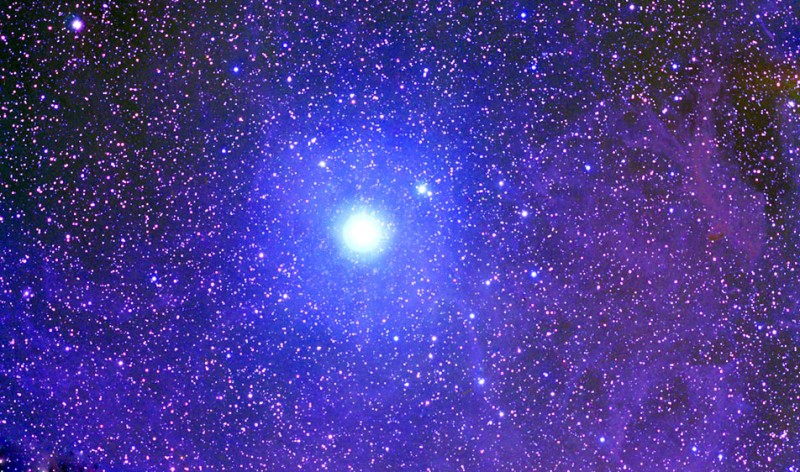
|
Credit & Copyright: Steve Mandel
(Hidden Valley Observatory)
Research Collaboration: Adolf Witt (University of Toledo) et al.
Explanation:
Centered on North Star
Polaris,
this 4 degree wide
field of
view covers part of a complex of
relatively
unfamiliar, diffuse dust clouds
soaring high
above the plane of our Milky Way Galaxy.
The combined light of the
Milky Way stars are reflected by the dusty,
galactic cirrus,
the reflected starlight having the same blue tint
characteristic of better known
reflection nebulae.
But this deep color image also records a faint reddish
luminescence from the dust grains as they
convert invisible stellar ultraviolet radiation to
visible red light.
Dubbed
extended red emission,
the dim
cosmic glow
is thought to be caused by complex organic molecules
known as PAHs
(polycyclic aromatic hydrocarbons), common
constituents
interstellar dust.
On planet Earth, PAHs are widely encountered as the sooty
products of combustion.
Research Collaboration: Adolf Witt (University of Toledo) et al.
|
January February March April May June July August September October November December |
| ||||||||||||||||||||||||||||||||||||||||||||||||
NASA Web Site Statements, Warnings, and Disclaimers
NASA Official: Jay Norris. Specific rights apply.
A service of: LHEA at NASA / GSFC
& Michigan Tech. U.
Based on Astronomy Picture
Of the Day
Publications with keywords: reflection nebula
Publications with words: reflection nebula
See also:
